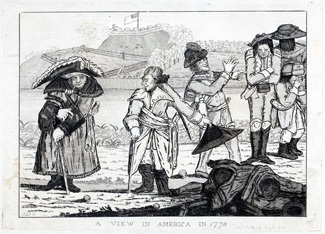Sir Henry Clinton (1730-1795)

Sir Henry Clinton succeeded Major General Sir William Howe as commander-in-chief of the British army in America in May 1778 after serving three years under Howe and, before him, under Major General Thomas Gage. A temperamental commander, Clinton understood the full strategic and tactical scope of the War for Independence as few other Britons did — though he was unable to turn that insight into victory.
Born on April 16, 1730, to Royal Navy officer George Clinton and his wife, Anne Carle, Henry Clinton moved with his family from England to New York in 1743 when his father was appointed governor of New York. At age 15 Clinton was given a commission in a New York infantry company and sent to the French fortress at Louisbourg in Nova Scotia, which had recently fallen to a British force. Thereafter he studied military science in France and saw considerable action in Europe during the Seven Years War. He returned to England after being wounded in 1762. Clinton then married and entered Parliament, while continuing to advance in the army. He had achieved the rank of Major General by May 1775 when he arrived in Boston as third in command of British forces in America, under Thomas Gage and Sir William Howe.
Clinton languished behind Gage and Howe. He was rarely consulted, and his proposals were often ignored. He submitted his resignation after Howe stripped him of troops that Clinton was using in October 1777 to press up the Hudson Valley to connect with John Burgoyne's forces. But in a major turn of events, Burgoyne's surrender at Saratoga led to Howe's resignation and Clinton's promotion to Lieutenant General and commander-in-chief.
Clinton's attempts to enact a southern strategy to end the war were delayed by news that France entered the war on behalf of the Americans. In the summer of 1778, he was ordered to send a major part of his army to the Caribbean to secure the British West Indies. Clinton evacuated Philadelphia, won a tactical victory over Charles Lee and George Washington at the Battle of Monmouth (June 28, 1778), and assisted the Royal Navy in fending off a French fleet threatening the Atlantic coast. Not until 1780 could Clinton turn his attention to a southern campaign, where he initially fared quite well. Charleston and its garrison of more than 3300 American soldiers and 300 cannon fell on May 12, 1780. Clinton then returned to New York and left the southern strategy in the hands of Major General Charles Cornwallis. The arrival of a French fleet in Narragansett Bay and trouble cooperating with his own naval colleagues kept Clinton from making any headway in the northern theater, while Cornwallis increasingly acted independently in moving his army of regulars and loyalists through the Carolinas and, without orders, into Virginia. Once Cornwallis settled in Yorktown, Clinton attempted to reinforce him and use the Royal Navy to prevent French and American forces from concentrating in the Chesapeake. Clinton failed on both counts.
Much of the blame for Cornwallis' surrender at Yorktown, in October 1781, was placed on Clinton, and it effectively ended his military career, though he retained his commission and continued to advance in rank. After the war he engaged in a pamphlet war to rehabilitate his reputation against that of Cornwallis, and he wrote his own history of the Revolution. He died in London on December 23, 1795.





